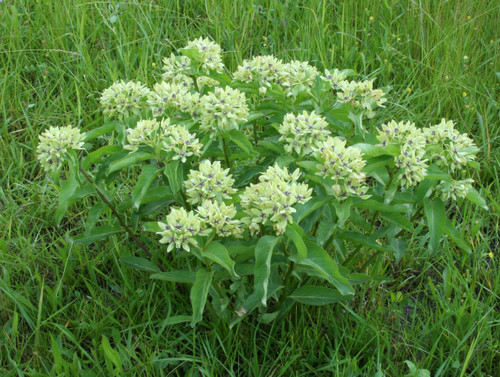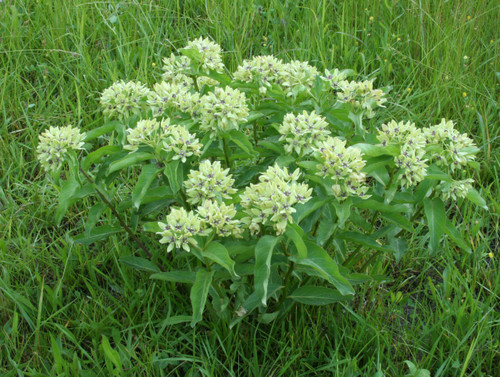Marsh milkweed is the 2015 plant of the year. It is extremely valuable to pollinators and monarch butterflies. Honey bees, bumble and other wild bees, wasps, flies, butterflies and more rely on nectar from marsh milkweed. It matures in August & September, blooming profusely and with lush foliage. Female monarch butterflies readily seek out the foliage on which to lay their eggs in late summer.
Marsh milkweed is a back-of-the-bed plant, rating 2 stars in our four-star system for formal gardens. Plants can reach four to five feet tall and equally as wide. The stems arch outward from a six- to eight-inch base. It is best to place this plant toward the middle or the back of a flower bed. It is a relatively short-lived perennial (two to five years on average), but it is well worth the effort to include in your home landscape ecosystem.
As its name suggests, plants prefer soil that remains moist most of the summer. If you plant them in areas of average moisture, be sure to water them during dry periods. Marsh milkweed does best in full sun, though we have a four- to five-year old plant that only receives direct sun for a few hours in the morning, and it is going strong.
If benefit to monarch butterflies is what you're after, it is important to use several milkweed species to ensure foliage is available for egg laying from late April into October. All four generations of monarchs are produced in Missouri with the fourth generation being the one that migrates.
More than just a pretty face, marsh milkweed will add showy pink flowers to your landscape while providing nectar for a myriad of pollinators and critically important food for monarch caterpillars.
Uses: rain gardens, edible when cooked, bees, butterflies, medicinal, deer resistant
Bloom time: August & September
Height: 4 to 5 feet
Space: 2 to 3 feet
Sun: Full sun to medium shade
Moisture: Average to moist (readily grows in mucky clay)
Seed:
- 4,500 seeds per ounce
- 1 ounce per 130 square feet
- 20 pounds per acre








